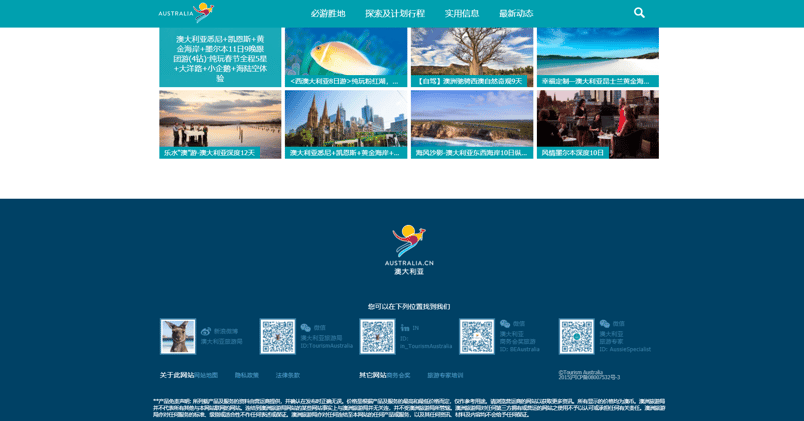For international brands looking to enter the China market, a localised web presence is a necessity. But it takes a lot more than simply translating your content to build a website for China. It must to be adapted to the needs of Chinese digital consumers and local search engines to deliver results.
While there are a lot of technical aspects you need to consider so that your website can be accessed behind the Great Firewall of China, your website content and design also deserve special attention. If done well going through some effort here will increase your website’s conversion rate and trust in your brand with Chinese audiences.
To help your brand succeed in this unique digital ecosystem, here are the top 5 tips on how to build a website for China:
- Choose website design elements that appeal to Chinese audiences
- Optimise website for Chinese search engines
- Ensure that it is mobile-responsive
- Feature Chinese social media platforms
- Have a content-friendly website
Choose website design elements that appeal to Chinese audiences
When comparing Western and Chinese websites, you may have noticed there are significant differences, particularly in 4 key areas:
Use of white space
Modern Western websites tend to be simple in design and use a lot of white space, whereas Chinese websites can appear much more cluttered. This is because Chinese websites maximise the web-space available. This means you will see often large chunks of information and banner advertisements that fill up the page.
Navigation layout and information categories
Western websites keep navigational items to a minimum to direct the user journey through the site as much as possible. Chinese websites often provide quite a lot of navigation options. Menus have general categories as well as shortcuts to popular specific topics. When clicked, links open in new windows or tabs; allowing users to easily compare information.
Even though both Western and Chinese websites have collapsible submenus, Chinese websites use a horizontal design. This means that content is displayed horizontally across the webpage rather than vertically down.
Colour choices and visuals
Western websites are minimalistic with the way they use colours, whereas Chinese websites use a wider colour scheme. Flash and animated content are often used. By incorporating bright colours and plenty of pictures, this will appeal to the Chinese user.
Example of a typical Chinese website design:

Integration of QR codes
Most Chinese websites feature a QR code on their homepage. This will help drive a seamless mobile integration. A quick scan of the QR code can give users more information about the product, promotional discounts or benefits.
Example of QR code embedded on homepage to promote membership program:

Optimise website for Chinese search engines
Similar to how Chinese website design is completely different to the Western world, so too are the Chinese search engines. In China, Baidu is the dominant player. This means that SEO in China should be focused on Baidu. However, the mechanisms of Baidu are quite different to Western search engines such as Google.
SEO in China should be focused on Baidu.
For example, Baidu places greater preference towards localised servers. This means websites that are hosted locally in China will have a higher search engine result. This also applies to domain names, with the domain ‘cn’ having greater authority.
Baidu places heavy emphasis on link-building. It takes into consideration both the quality and quantity of links. Therefore, it is important to build high-quality, relevant links that redirect back to your website. By optimising your website for Baidu, this will improve your website visibility and allow your website to be easily found by the Chinese audience.
Ensure it is mobile-responsive
Chinese people are heavy mobile users. Not only do they use it for daily social media interactions, but also for many different things – such as looking up information before purchase, paying for transport, booking flight tickets, online food ordering and much more. In fact, the growth in China mobile internet usage has skyrocketed in recent years. 2015-16 saw a year-on-year increase of 31% in users making online payments and 30% choosing to shop online.
That’s why it’s essential for international brands to build a mobile-responsive website to appeal to their Chinese target audience. This will ensure a better user experience for customers. They will be able to easily access relevant information and the fast-loading speed will keep them on your website longer.
It is essential for international brands to build a mobile-responsive website to appeal to their Chinese target audience.
Feature Chinese social media platforms
Featuring Western social media platforms such as Facebook or Instagram on your website will get you nowhere. This is because these applications are not accessible behind the Great Firewall of China. Internet users in China are not able to access them, let alone maintain an active account on these platforms.
Instead, it is important to feature links to your official Chinese social media accounts such as WeChat, Weibo, Qzone and Youku. WeChat is a popular and influential social sharing platform. It has many unique functions that allows brands (including international brands) to effectively reach their target audience. It is an all-in-one platform, that extends beyond messaging to a multitude of features – such as posting videos and images, ordering a taxi, purchasing movie tickets etc. With a monthly active user base of 889 million, it comes as no surprise that WeChat is a fundamental tool to reach Chinese internet users.
Example of a Chinese website that features local social media platforms:

Have a content-friendly website
With the technicalities put aside, it is important to have website content that resonates with the Chinese audience. Simply translating your English content to Chinese will not work. Instead, it should be adapted to the local market – taking into consideration appropriate social and cultural references.
It is important to have website content that resonates with the Chinese audience.
For example, you can research key trends in China and points of interest that resonate with Chinese internet users. Try to incorporate this into your product or service offering where applicable. It is also important to ensure that your website content does not contain sensitive words or delve into a sensitive content, otherwise it will be blocked and not accessible.











